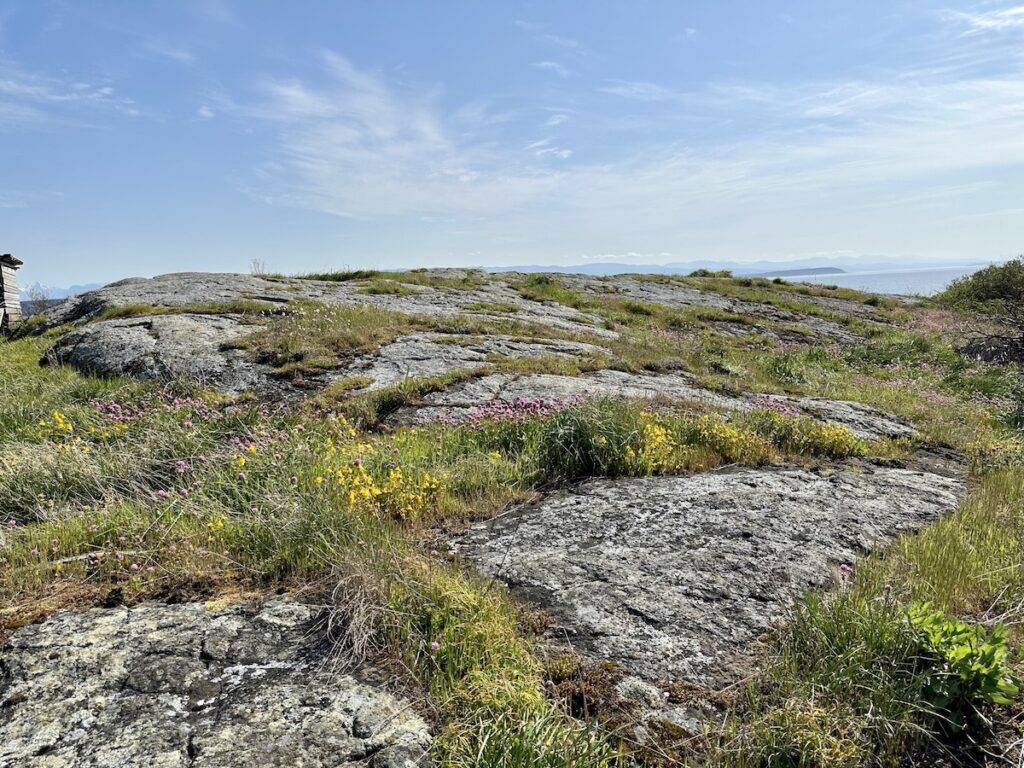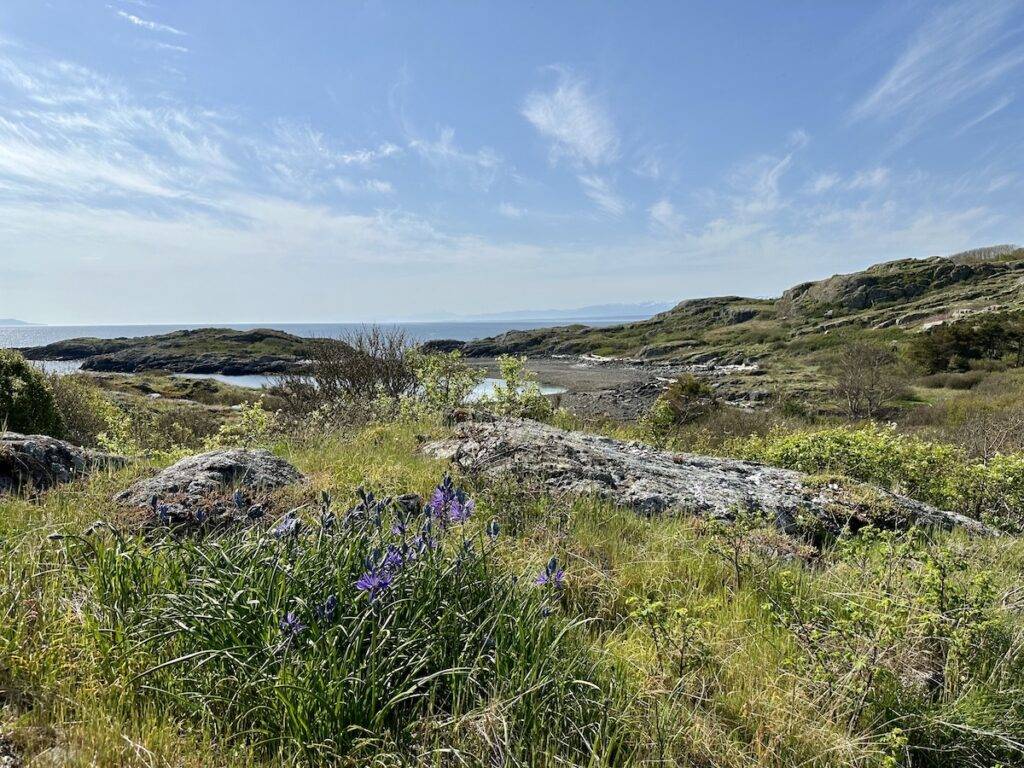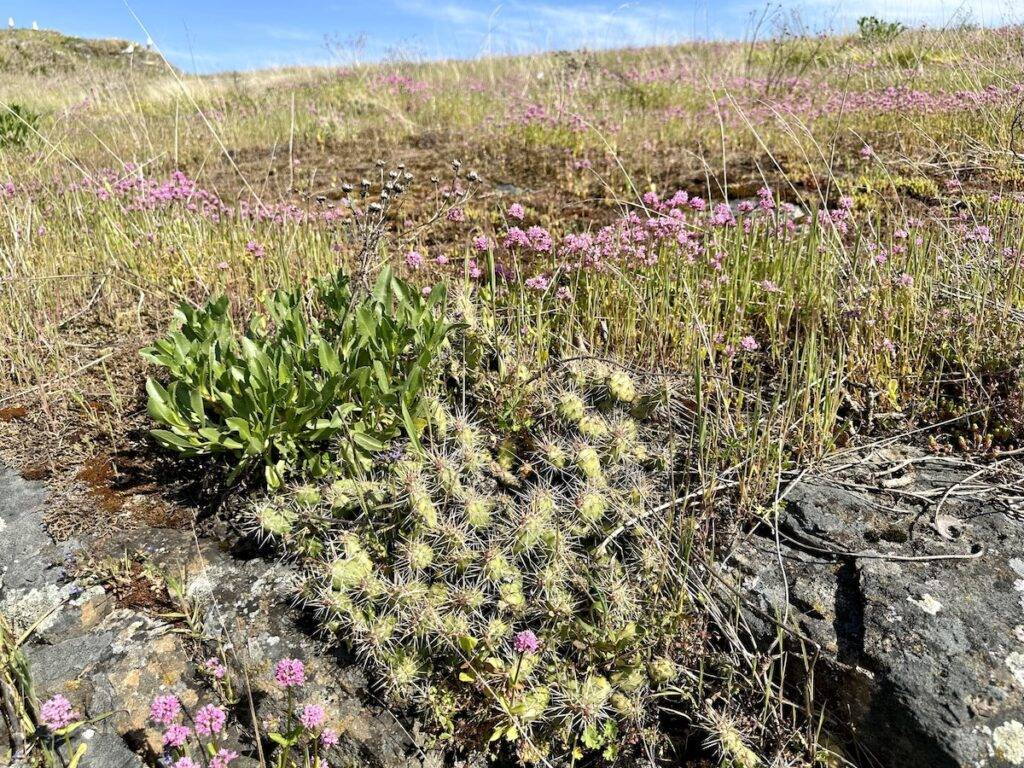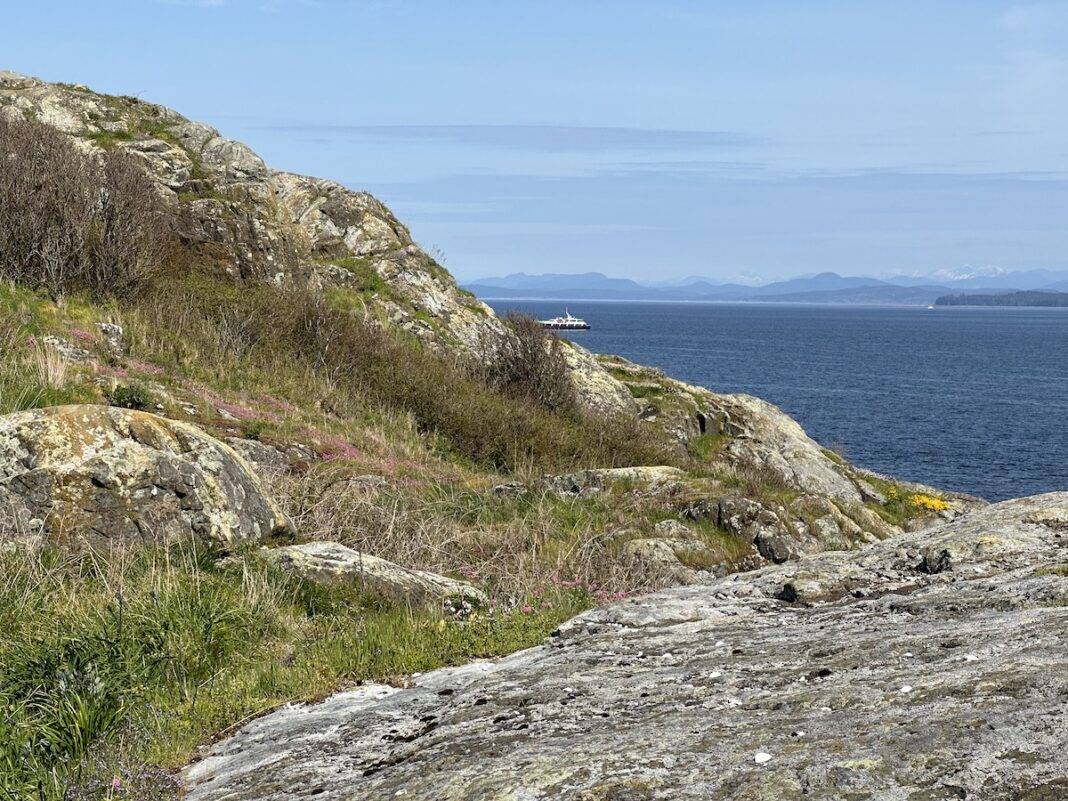It takes volunteers to protect all that makes Mitlenatch special — the breeding birds, the unusual fauna, the sea stars.
Heidi Tonn awaits our group as we disembark and walk up the shore of Mitlenatch Island. She’s greeted countless boaters and kayakers in the 30 years she’s volunteered on this anomalous island in the Strait of Georgia, off British Columbia’s Vancouver Island.
What makes Mitlenatch special? Being in a rain shadow, it gets only about 30 inches of rain a year. Most rain-bearing clouds pass right over, dropping their moisture on Vancouver Island. Add in a history of First Nations people burning the island to cultivate camas — a purple flowering plant important for its edible root — and you have a semi-arid island with a lower flora profile than the surrounding heavily forested islands. It’s a critical breeding colony for seabirds, especially the thousands of pairs of Glaucous-winged gulls who build their nests here in rocky outcroppings. Cormorants (pelagic and double-crested), black oystercatchers, pigeon guillemots and northwestern crows also come here to nest.


Mitlenatch is only accessible from the water. I visited while traveling through the area on a posh catamaran with the Victoria-based company Maple Leaf Adventures. Several water taxis and tour groups offer service from Vancouver Island or nearby Cortes Island. While the name Mitlenatch means “calm waters all around” in the language of the Coast Salish, you have to wonder if they were being ironic. The Georgia Strait is so windy that boats can’t always make it to Mitlenatch. But when they do, MIST volunteers greet boaters, and politely but firmly lay down the rules: Stay on paths. No camping. No dogs. Don’t take anything. Don’t bother the birds.
The Georgia Strait is so windy that boats can’t always make it to Mitlenatch. But when they do, MIST volunteers greet boaters, and politely but firmly lay down the rules: Stay on paths. No camping. No dogs. Don’t take anything. Don’t bother the birds.
Which brings us back to Tonn. She and her partner Rodney Mitchell are part of the Mitlenatch Island Stewardship Team (MIST), which protects the birds for five months every year, covering the nesting and breeding season. I ask her whether they’re spending the entire summer on Mitlenatch, and she laughs. “Just for a week at a time,” she says. “There’s lots of volunteers and there’s a huge wait list, too. You’ve got a little cabin on the beach. It’s pretty amazing.” She and Mitchell honeymooned in the volunteer cabin 30 years ago.

Since our group has its own naturalists to keep us in line, we wander off to explore the island, walking single file on narrow trails. It’s early May and the island is colorful with pink pea flowers, purple camas, yellow monkey flowers, and exquisite little chocolate lilies. We come to a blind on top of a hill and take turns watching a colony of gulls on a rocky outcropping. And we find the prickly pear cactus our naturalist had promised, so unexpected — yet beautifully welcome — in coastal British Columbia.
The MIST volunteers do far more when here than simply greet visitors. They participate in bird counts run by a Cornell Lab of Ornithology program and collect baseline information on seabird mortality for Bird Studies Canada. MIST keeps track of 25 blooming plants for a plant phenology study and removes invasive species like Himalayan blackberry. In the water, MIST volunteers collect data to track long-term changes in the intertidal areas. They survey and measure sea stars for the Vancouver Aquarium, which is tracking the impact of Sea Star Wasting Syndrome. They also report cetacean and turtle sightings and map eelgrass beds to assess changes.


As I poke around the rustic volunteer cabin where planks of wood form a picnic bench and a mobile of shells, bones and driftwood hangs from the ceiling, I think of the dedication of the volunteers. Tonn acts like 30 years of service is nothing, mentioning volunteers who’ve been involved since the 1960s. Outside the cabin, it’s low tide and the beach is a mass of exposed, living oysters. Besides our group, we encounter only Tonn, Mitchell, two students working on a plant phenology project and one taciturn kayaker on the island. It’s easy to see why people would return year after year, seeking escape from other humans and the opportunity to help protect one of the most important seabird nesting sites in the Georgia Strait.
What You Can Do: Dreaming about protecting birds on this deserted-ish island? Find out about volunteer opportunities and get on the waiting list now.


